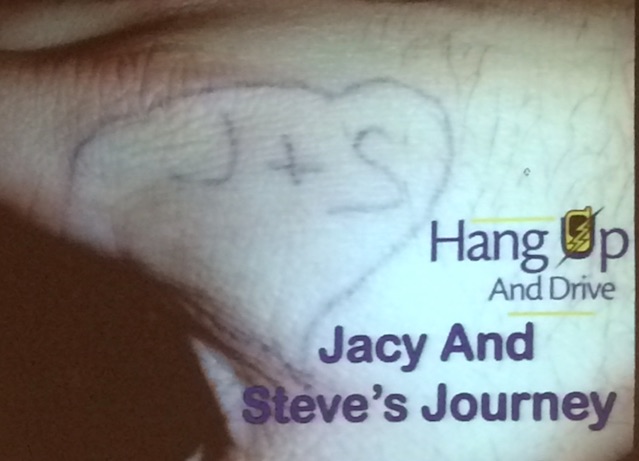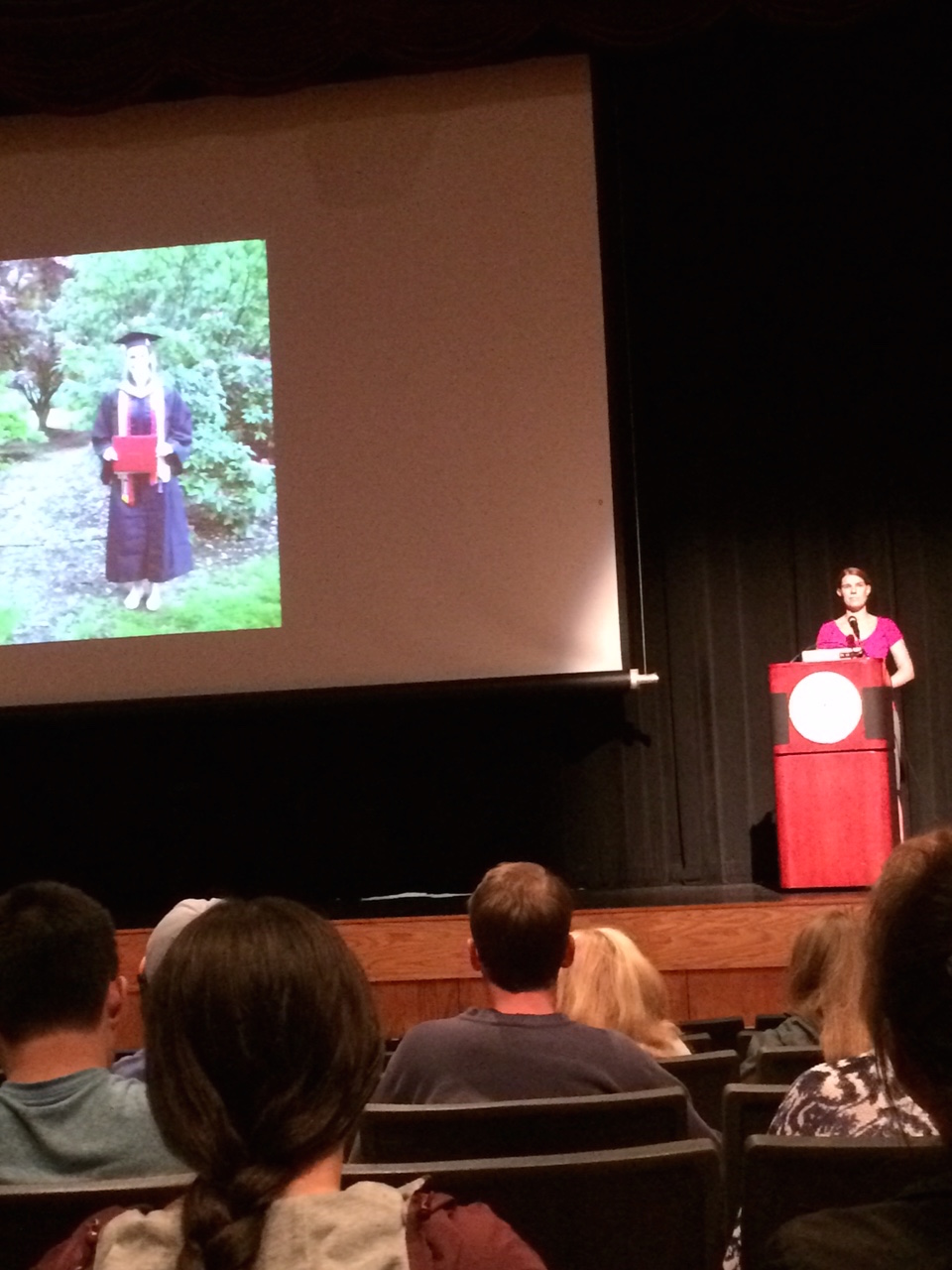Halloween Parade In Scarsdale Village
- Details
- Written by: Joanne Wallenstein
- Hits: 5852
 Unseasonably chilly temperatures did not deter Scarsdale's youngest from coming out in costume for the Halloween Parade on Sunday October 18th. Adorable kids in colorful costumes proudly posed for the camera before lining up to parade down Spencer Place and show off their Halloween garb.
Unseasonably chilly temperatures did not deter Scarsdale's youngest from coming out in costume for the Halloween Parade on Sunday October 18th. Adorable kids in colorful costumes proudly posed for the camera before lining up to parade down Spencer Place and show off their Halloween garb.
An enthusiastic team from the Scarsdale Recreation Department handed out donuts and led the parade, dressed in wonderful costumes themselves.
See our photo gallery of Scarsdale kids in costume below:
Great Places to Pick Apples, Pumpkins, Grapes, Peppers, Eggplants, Tomatoes, Zucchini, and more!
- Details
- Hits: 6610
 Now is the perfect time to take the family to one of the many apple orchards in our area, all within an easy drive from Scarsdale. Make sure you call ahead to confirm hours, availability and attractions or special events. Leave your pets at home; they aren't allowed at most farms. If you are thinking of bringing a picnic, call ahead to make sure the farm allows you to bring your own food.
Now is the perfect time to take the family to one of the many apple orchards in our area, all within an easy drive from Scarsdale. Make sure you call ahead to confirm hours, availability and attractions or special events. Leave your pets at home; they aren't allowed at most farms. If you are thinking of bringing a picnic, call ahead to make sure the farm allows you to bring your own food.
Apple picking season started around Labor Day and lasts through October. Go soon to get the best apples. Also, the apples on the lower branches, which are easier for smaller children to reach, generally get picked first.
Pumpkin picking season starts around October 1. The best pumpkins go fast and Halloween is coming soon!
When you arrive home with your apples, keep them in a cool spot (root cellar, crisper, etc.) to extend their freshness so you can enjoy them longer.
Westchester County
Harvest Moon Farm & Orchard – North Salem, 914-485-1210
130 Hardscrabble Road; http://www.harvestmoonfarmandorchard.com/about.html
Formerly Outhouse Orchards, this family-run farm allows visitors to pick their own apples daily throughout the season. Easy drive up I-684 and good choice for young children. Fall festival with lots of activities for the family every weekend. Also enjoy wine tasting for the adults. Afterward, stop off at Muscoot Farm (free admission) to visit a working farm (muscootfarm.org) or walk around charming Katonah.
Stuart's Farm – Granite Springs, 914-245-2784
62 Granite Springs Road; http://www.stuartsfarm.com/
The Stuart family farm, the oldest in Westchester, offers nine types of apples. Also, pick your own pumpkins from the vine through November. Enjoy hayrides with the family.
Wilkens Fruit & Fir Farm – Yorktown Heights, 914-245-5111
1335 White Hill Road; www.wilkensfarm.com/
Apple picking began the first week of September and there are dozens of varieties. Wilkens offers pumpkin picking beginning October 15 and cut-your-own Christmas trees starting the Saturday after Thanksgiving.
Dutchess County
Fishkill Farms – Hopewell Junction, 845 897-4377
9 Fishkill Farm Road; http://fishkillfarms.com
Historic apple orchard run by the same family for more than 100 years. The farm's store stocks pies, donuts, pasture-raised eggs, locally produced ice cream, maple syrup and more. Apple varieties grown on the farm include Cortland, Spartan, Empire, Golden Delicious, Red Delicious, Mutsu, Jonagold, Idared, and Stayman Winesap.
Mead Orchards – Tivoli, 845-756-5641
15 Scism Road, off Rte. 9; www.meadorchards.com
Mead Orchards is a 185-acre fruit orchard and vegetable farm. Its orchards produce Fortune, Northern Spy, Senshu, Suncrisp, Cameo, Crimson Crisp and Ruby Frost, among others.
Orange County
Pennings Orchard – Warwick, 845-986-5959
Route 94 & Warwick Turnpike; http://penningsfarmmarket.com
Offers 15 varieties. Probably the biggest and one of the best orchards around. The trees tend to be low to the ground, so you don't need a pole to pick them. Good for small children. Adults can enjoy the hops garden and relax at the outdoor bar, which offers craft beer, wine, hard cider, live music, picnic table seating and lawn games.
Apple Ridge Orchards – Warwick, 845-987-7717
101 Jessup Road; www.appleridgeorchards.com
Located in the picturesque Warwick Valley, the views are worth the trip, plus you can pick pumpkins right off the vine. This is a great place for kids, as they have dwarf apple trees. An added attraction is the glass honey bee observation hive, where you can watch honey bees at work and learn about pollination. There are also hayrides, farm animals and fresh pressed apple cider and delicious homemade hot apple cider donuts.
Slate Hill Orchards – Slate Hill, 845-355-4493
2580 US Route 6; www.slatehillorchards.com
Every weekend starting the third week in September, you can pick apples, pumpkins and, a treat we don't usually see in our area as pick-your-own, grapes. All organic – no herbicides, pesticides or fungicides. Enjoy the hayrides and hay maze.
Rockland County
Dr. Davies Farm – Congers, 845-268-7020
306 Route 304
This historic 35-acre orchard is home to 4,000 trees and is open for picking daily. One of the oldest continually working farms in the area.
Long Island
The Milk Pail - Water Mill, NY, 631-537-2565
50 Horsemill Lane, Watermill, NY.
Choose from twenty apple varieties. This orchard has dwarf apples trees, which are the perfect height for all ages. Select your own pumpkins, squash and gourds in many sizes, shapes and colors.
Nearby New Jersey
Riamede Farm - Chester, NJ 908-879-5353
122 Oakdale Road. www.riamede.com
Bring your own scissors and snip a pumpkin right off the vine starting September 28! The farm offers a complimentary hayride to the picking field on weekends and Columbus Day. You can also pick your own apples in several varieties including heirlooms.
Connecticut
Silverman's Farm – Easton, CT 203-261-3306
451 Sport Hill Road. http://www.silvermansfarm.com
Pick your own apples and pumpkins. Animal farm/petting zoo with many animals, including buffalo, llamas, alpacas, sheep, goats, fallow deer, emus, long-horn cattle, and exotic birds.
Candee Farm – Easton, CT (203) 268-5623
456 Morehouse Rd
Candee Farm is a great stop just down the road from Silverman's Farm. You can pick your own fruits and vegetables throughout the spring and fall. They are currently offering peppers, eggplants, tomatoes, zucchini, and more, all at low prices.
Easy drive - located 45 minutes up the Merritt Parkway.
Scarecrow Festival at the Scarsdale Pool
- Details
- Written by: Joanne Wallenstein
- Hits: 6273
 Scarsdale families had a blast building straw men and women at the Scarecrow Festival at Scarsdale Pool on Sunday September 27. Close to 200 people attended with 34 families signing up to build their own scarecrows. The weather was perfect and everyone enjoyed hot dogs, corn on the cob, apple cider, music, and face painting while doing some very creative work.
Scarsdale families had a blast building straw men and women at the Scarecrow Festival at Scarsdale Pool on Sunday September 27. Close to 200 people attended with 34 families signing up to build their own scarecrows. The weather was perfect and everyone enjoyed hot dogs, corn on the cob, apple cider, music, and face painting while doing some very creative work.
Fall fun continues with a Halloween Parade in Scarsdale Village and Halloween Window Painting on Sunday October 18th.
Photo Credit: Anthony DiDomenico





Greenacres Annual Picnic Bring Smiles to All
- Details
- Written by: Midori Im
- Hits: 4095
 Greenacres Elementary families and faculty gathered at the start of the new academic year at the annual back to school picnic. Areas of the field were marked off by classroom, so that parents and students could easily find their new classmates and informally meet their teachers. In furtherance of the school's goal of zero-waste events, composting bins were left out, and sixth graders who had moved on to middle school helped oversee trash separation.
Greenacres Elementary families and faculty gathered at the start of the new academic year at the annual back to school picnic. Areas of the field were marked off by classroom, so that parents and students could easily find their new classmates and informally meet their teachers. In furtherance of the school's goal of zero-waste events, composting bins were left out, and sixth graders who had moved on to middle school helped oversee trash separation.  This year Greenacres, the oldest school in the district, continues to celebrate its centennial with special events which will culminate in a huge celebration of current and past students, families, and faculty at the Diamond Jubilee Gala on November 20th and a family celebration on November 29th. More information can be found at the link below.
This year Greenacres, the oldest school in the district, continues to celebrate its centennial with special events which will culminate in a huge celebration of current and past students, families, and faculty at the Diamond Jubilee Gala on November 20th and a family celebration on November 29th. More information can be found at the link below.
Do you have photos to share? Email them to scarsdalecomments@gmail.com.



Speakers Offer Cautionary Tale to New Drivers
- Details
- Written by: Caroline Donat
- Hits: 5878
 On the evening of Thursday September 10 the curriculum at SHS turned from academics to driving safety when seniors and their parents met in the auditorium to attend a mandatory meeting for students who wished to obtain campus parking permits. As an SHS senior driver, I waited with my peers and parents in the auditorium and heard an occasional grumble from classmates about not being able to come and go quickly to obtain parking privileges. However, Youth Outreach worker Lauren Pomerantz and Assistant Principal Chris Griffen quickly drew focus and concern when they introduced speakers, Jacy Good and Steve Johnson. Mr. Griffen offered some frightening statistics: motor vehicle accidents are the lead cause of teenage death in the United States. Good went beyond the numbers to give us an understanding of what that could really mean for us.
On the evening of Thursday September 10 the curriculum at SHS turned from academics to driving safety when seniors and their parents met in the auditorium to attend a mandatory meeting for students who wished to obtain campus parking permits. As an SHS senior driver, I waited with my peers and parents in the auditorium and heard an occasional grumble from classmates about not being able to come and go quickly to obtain parking privileges. However, Youth Outreach worker Lauren Pomerantz and Assistant Principal Chris Griffen quickly drew focus and concern when they introduced speakers, Jacy Good and Steve Johnson. Mr. Griffen offered some frightening statistics: motor vehicle accidents are the lead cause of teenage death in the United States. Good went beyond the numbers to give us an understanding of what that could really mean for us.
In 2008, Good graduated Muhlenburg College as an honors student. She was excited about her plan for the future: she would move to Brooklyn, work for Habitat for Humanity, and continue dating her college sweetheart Steve Johnson. These plans were abruptly interrupted in the middle of rural Pennsylvania on her final drive home from school. Her parents were driving at a legal speed when a car drove through a red light at an intersection, causing a deadly collision. The driver was an eighteen-year-old – a senior at the local high school. He had been driving and while talking on the phone with friends when he made a mistake that took the lives of both of Good's parents.
While her parents were beyond saving, Good was rushed to the hospital. She had a ten percent chance of living through the night. "She looked like death. I couldn't recognize her," Johnson recalled. The accident was so severe that Good can remember neither the crash nor her time in the hospital. She suffered a myriad of harm, including partially collapsed lungs, broken legs, and brain damage. Miraculously, she was eventually able to rehabilitate herself and return to her childhood home, where she realized that her parents were really gone. Good's brother had to tell their 85-year-old grandmother that her child had died while he planned a funeral and prayed for his sister.
The accident was so severe that Good can remember neither the crash nor her time in the hospital. She suffered a myriad of harm, including partially collapsed lungs, broken legs, and brain damage. Miraculously, she was eventually able to rehabilitate herself and return to her childhood home, where she realized that her parents were really gone. Good's brother had to tell their 85-year-old grandmother that her child had died while he planned a funeral and prayed for his sister.
Good stressed the idea that a seemingly small action, such as responding to a phone call, can have an enormous ripple effect. For example, her mother's death affected the hundreds of children to whom she taught English every day.
Good and Johnson spoke to their audience knowing that this new generation of drivers can prevent a similar tragedy. The founded an organization called Hang Up and Drive to educate young drivers about the danger of driving and talking on the phone. I looked around the auditorium to see the previously antsy crowd taking out phones to download apps that respond to calls and messages saying that the user is busy driving. People started signing pledges to be responsible drivers that were circulated by the speakers.
Even though the speaker's message is easy to ignore because their tragedy did not directly involve us, they are invaluable to hear as they bring us back to reality every now and then. While laws and regulations promote safe driving, the drivers and passengers are the ones who can truly control a situation. As teenagers, we will continue to want to play our music so everyone on the block can hear, and speed up like we will live forever. However, wake-up calls like Johnson's and Good's make for more moments in which we doubt our invincibility. They remind us that our fates, and the fates of others are on the road, are our responsibility.
The assembly was sponsored the Scarsdale High School PTA Safety Committee and the Scarsdale High School Administration.








































